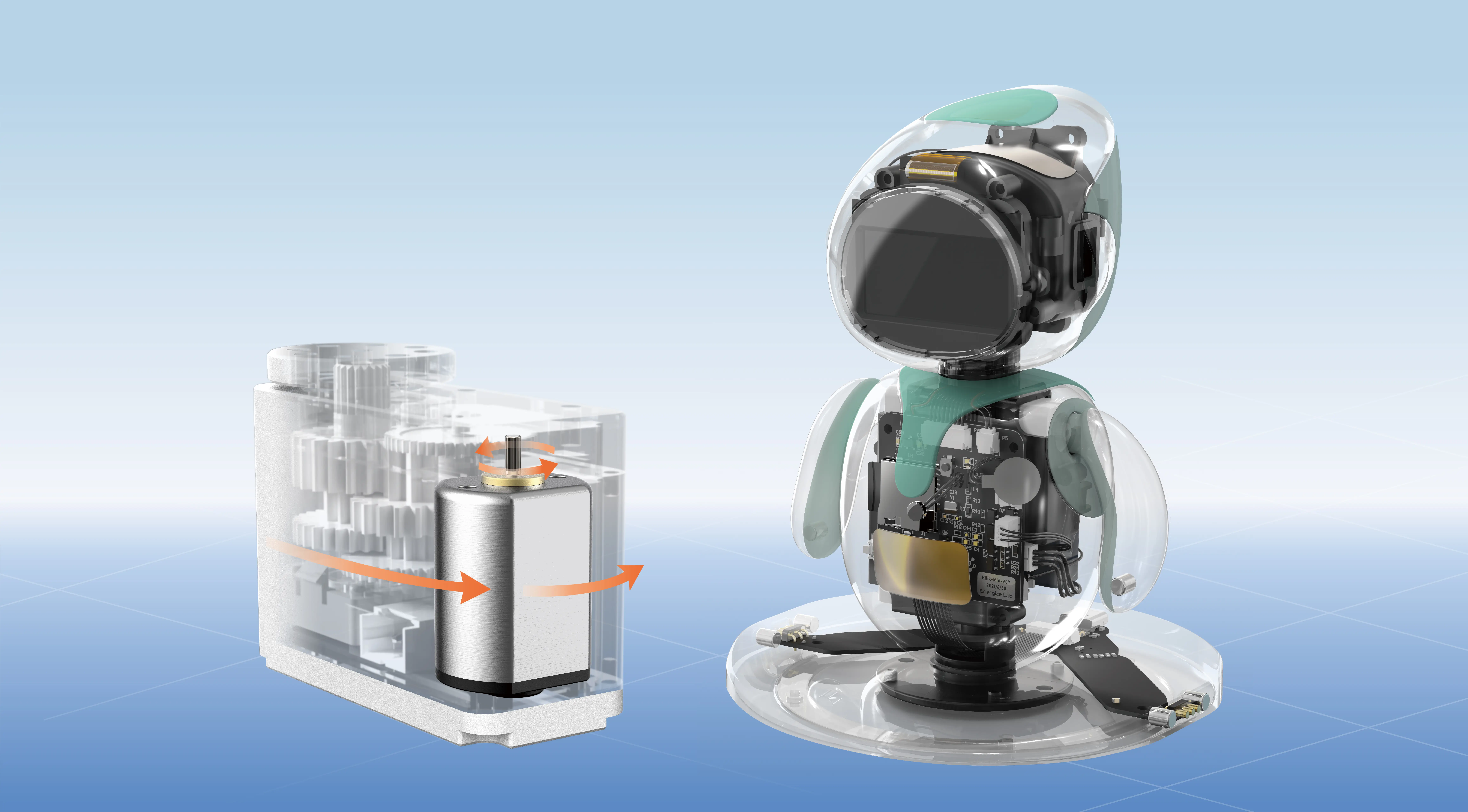part 1:
Unlocking Power and Precision: The Magic of DC Motors with Gears
Imagine a world where machines can perform complex tasks with remarkable accuracy, efficiency, and control. Whether it's the robotic arm delicately assembling electronics, a conveyor belt sorting packages at lightning speed, or an electric vehicle smoothly navigating city streets, behind the scenes lies an essential partner: the DC motor with gear.

At its core, a DC motor is a simple yet powerful device—converting direct current electrical energy into rotational motion. But the real magic happens when you pair it with gears, creating what’s known as a gear motor. This combination enhances the capabilities of a basic motor, transforming it into a finely tuned instrument capable of a wide array of applications.
The Basics of DC Motors
To appreciate the significance of gearboxes, we first need to understand what makes DC motors special. Direct current motors are prized for their straightforward design, quick start-up, and ease of speed control. They operate by passing electrical current through windings inside a magnetic field, which produces torque and causes the rotor to turn.
Various types of DC motors exist—brushed, brushless, series, shunt, and more—each suited to different needs. They’re renowned for their responsiveness and simplicity. However, one challenge is that their torque and speed profiles aren't always ideal for specific use cases. For example, high speed doesn't always equate to high torque, and vice versa.
The Role of Gears in Motor Performance
This is where gears come into play. Gears are mechanical devices that transmit power and modify the speed-torque characteristics of a motor. By changing gear ratios—essentially, the size and number of teeth on gear wheels—you can significantly influence the output performance.
Imagine a bicycle gear system. The same pedaling effort can produce different speeds depending on the gear you choose. Similarly, gears in mechanical systems allow engineers to optimize performance based on operational requirements.
When added to a DC motor, gears serve multiple functions:
Speed reduction: Gears can slow down the motor’s high rotational speed to a more useful level for the application. Torque multiplication: When speed is reduced, the torque output is increased proportionally, providing greater force where needed. Positioning accuracy: Gears can facilitate precise control of movement, especially important in robotics and automation. Direction control: Gear arrangements can influence the direction of rotation, essential for specific tasks.
Gears in Action: From Industry to Hobby Projects
From industrial robots performing delicate assembly tasks to hobbyists building custom RC cars, the combination of DC motors with gears is everywhere. For example, in a robotic arm, engineers use gearboxes to deliver enough torque to lift objects while maintaining controlled, smooth movements. In hobbyist drones or remote-controlled vehicles, gear reductions ensure that motors can operate efficiently within compact spaces.
Types of Gearboxes Used with DC Motors
The types of gearboxes employed with DC motors are as diverse as the applications they serve. Some common types include:
Gear trains: Simple arrangements of gears that transmit motion between axes. Planetary gearboxes: Compact gear systems that provide high gear ratios in a small footprint, ideal for robotics. Worm gears: Provide high reduction ratios and self-locking features, useful for lifting or holding loads.
Each gearbox design offers unique advantages in terms of efficiency, size, cost, and ease of integration.
Why Combine DC Motors with Gears?
The blend of a DC motor with a gear system offers numerous benefits:
Enhanced Functional Flexibility: You can customize torque and speed characteristics to fit precise needs. Compact Design: Gearboxes help fit high-performance motors into tight spaces. Cost-Effectiveness: By optimizing performance with gears, engineers can select less powerful motors while still achieving desired outputs. Longevity and Reliability: Properly designed gearboxes distribute loads evenly, reducing wear and tear over time.
Applications Across Industries
The marriage of DC motors with gears is integral to many sectors:
Robotics: Precision movement, gripping mechanisms, and mobility. Automotive: Power windows, seat adjustments, and electric steering. Industrial automation: Conveyor systems, packaging machinery, and CNC equipment. Home appliances: Smart curtains, adjustable beds, and kitchen gadgets. Hobby electronics: Model trains, drones, and remote-controlled robots.
Choosing the Right Gear Motor
Selecting the appropriate gear motor depends on several factors:
Load requirements: What is the weight or force needed? Speed range: How fast do you want the output to be? Precision: Do you need micro-positioning or smooth motion? Size constraints: How compact must the system be? Operational environment: Will it face dust, moisture, or high temperatures?
Understanding these parameters helps engineers optimize designs, ensuring performance, durability, and efficiency.
The Future of DC Gear Motors
As technology advances, so does the potential of gear motor systems. Developments in materials, miniaturization, and smart control systems open new doors. For example, integrating sensors and microcontrollers can lead to autonomous, adaptive systems that respond to their environment in real time.
Moreover, sustainable energy solutions push the development of more efficient gearboxes that waste less power, extending battery life in portable applications. The integration of artificial intelligence in control algorithms promises even smarter gear motor systems capable of predictive maintenance and self-optimization.
Summary
The humble DC motor with a gear may seem simple at first glance, but its importance cannot be overstated. It embodies a perfect harmony of electrical and mechanical engineering, allowing us to push the boundaries of what machines can do. From everyday home gadgets to complex industrial robots, gear-augmented DC motors are the driving force behind innovation, efficiency, and precision.
The next part will deepen this exploration by examining specific gear motor designs, manufacturing considerations, and future technological trends shaping this vital component of modern machinery. Stay tuned for an in-depth look at how gearboxes are tailored for different applications, and how the ongoing evolution of this technology continues to influence industries worldwide.
Kpower has delivered professional drive system solutions to over 500 enterprise clients globally with products covering various fields such as Smart Home Systems, Automatic Electronics, Robotics, Precision Agriculture, Drones, and Industrial Automation.




































